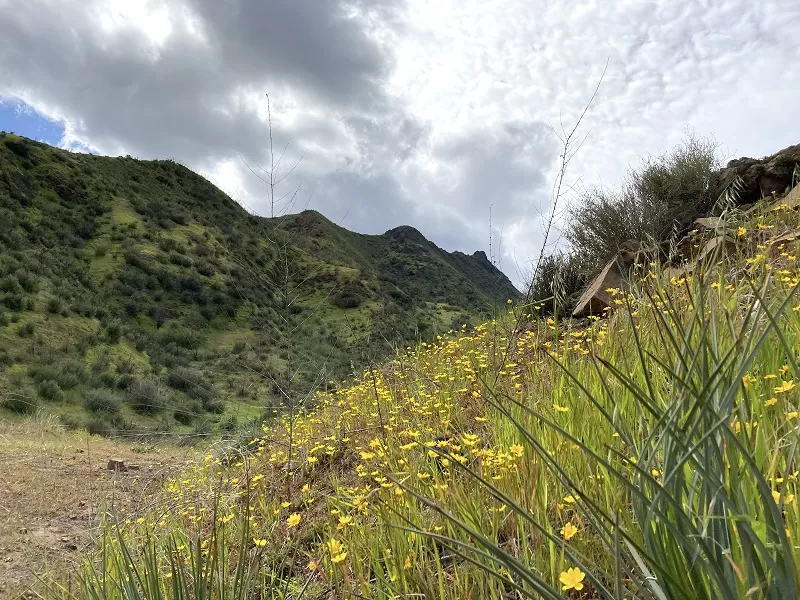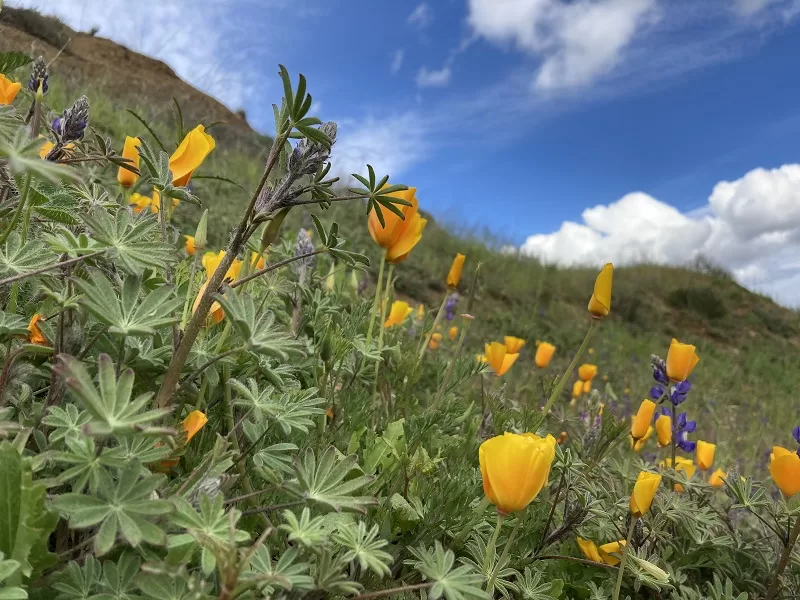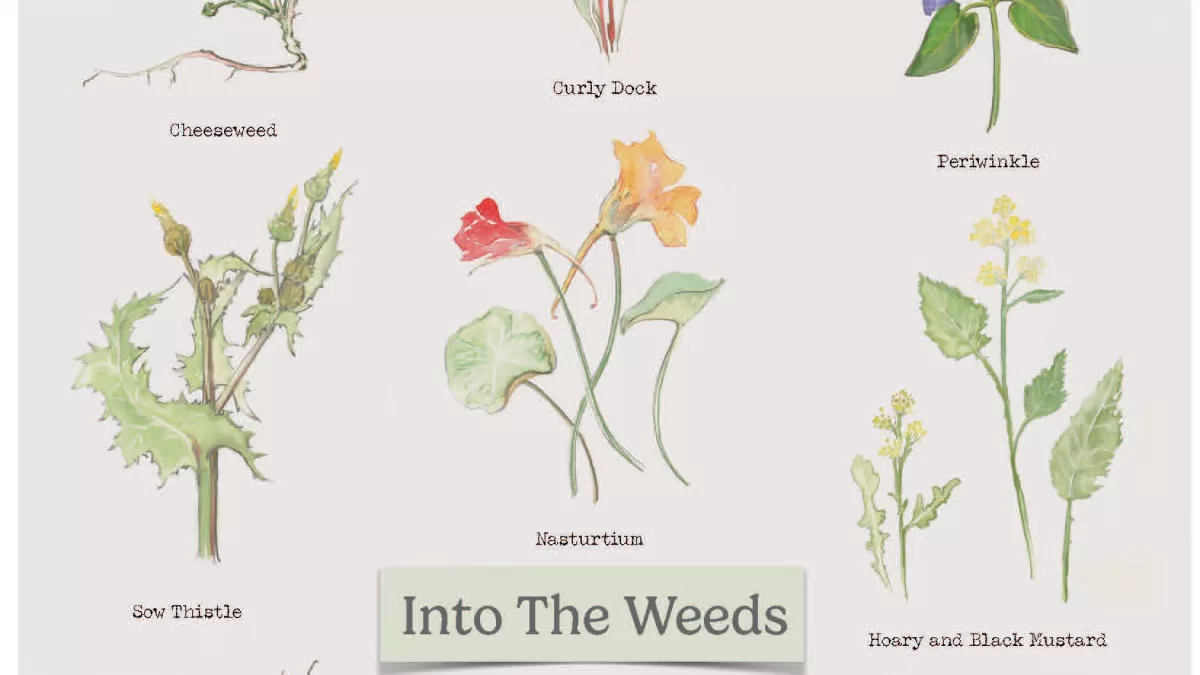Weeds! They are everywhere this spring, but just because they may be ubiquitous or even invasive doesn’t mean that they aren’t interesting in their own right. There are stories here: history, folklore, and even beauty. Join us for a closer look at something that is all too often overlooked. Botanical illustrations by Suzanne Guldimann. Cover design by Urs Baur.
Spring equinox—the official start of the season—doesn’t arrive until March 20, at 2:24 pm, but no one in the Santa Monica Mountains can doubt that spring is already here. The record rains of winter have brought about a green transformation. The hills are lush and full of life. Nesting season is already underway in the garden. The house finches are squabbling over the best nesting places under the eaves. The Western bluebirds and the oak titmice are debating the merits of the nest boxes. The great horned owls in the neighbor’s eucalyptus tree are already sitting on eggs, and so are the red-tailed hawks that nest each year in that particular oak tree by a certain trailhead.

Warmer weather and a break in the rain has given native wildflowers an opportunity to catch up with the invasive weeds and winter grasses. The ceanothus is already fading, but the native yellow violets are blooming, and if one knows where to look, there are chocolate lilies, bright pink prickly phlox and hillsides of goldfields. The soil remains moist enough to support the next round of wildflowers—annuals like clarkias and Chinese houses, bulbs like mariposa lilies and wild hyacinth. The creeks and springs continue to flow, but the trails are drIer now, and easier to traverse without damage to the trail itself or to one’s shoes.

One small piece of the Santa Monica Mountains that is particularly rich in native wildflowers is enjoying not only a promising spring this year, but a reprieve. It will never again be at risk of becoming a housing tract. Activists and officials will be gathering along Kanan Dume Road on March 12, to dedicate Triangle Ranch. The acquisition of the final 150 acres of the more than 300-acre Triangle Ranch property—named for its shape—was complicated and took years. This was a long, hard, expensive slog for activists, residents, and state officials. That this parcel is now public open space is a testament to grassroots advocacy and the grit and determination of the conservation community.
The Mountains Recreation and Conservation Authority will operate the new parkland. The agency is busy replacing the old chain link fence installed by the would-be developers decades ago with a more welcoming and wildlife friendly split-rail fence. The gathering for the dedication is expected to be small, a quiet affair, but the accomplishment it celebrates is not small—saving this remarkable corner of the Santa Monica Mountains from being paved over is an achievement of a magnitude that deserves adjectives like stupendous and extraordinary.
Even with a break in the weather, all of the rain we have received continues to impact travel—parts of Topanga received an astonishing 39 inches of rain so far this season. It can take time for all of that water to percolate into the soil, and rocks keep rolling onto local canyon roads—including a massive one that shut down both lanes of Malibu Canyon last week. It’s important to keep an eye out for rocks, mud, debris and ponding from reactivated springs and seeps, especially on already treacherous stretches of road, like Topanga Canyon Boulevard’s S-curves. Local roads aren’t the only problem. Skiers and snowboarders may long for the mountains, but many routes to the snow are still impacted by record snowfall. Patience is required.
Wildflowers aren’t the only things flourishing this spring. The most luxuriant crop of weeds we’ve seen in years has sprung up in the garden, seemingly overnight. We’ll be taking a look at some of the most common weeds, and their uncommon histories and lore in this issue of TNT, a trip into the weeds before the annual chore of cutting them down and digging them up begins. That time is coming soon. One is reminded of the baobabs from Antoine de Saint-Exupéry’s book The Little Prince, which begin as tiny weeds and outgrow their planet, squeezing out everything else.
Also in this issue of TNT we welcome back guest columnist Emmeline Summerton of Lost Canyons LA for a look at the modernist movement in Topanga; TNT historian Jimmy P. Morgan spends some time with Bernie Sanders’ newest book; and our ongoing fiction serialization The Coastwatchers returns to our Storyland section, turning back the clock to 1942 for a look at life in wartime Malibu. Maybe the weeding can wait.
Stay safe, be well. Don’t forget to “spring ahead” on March 12!





